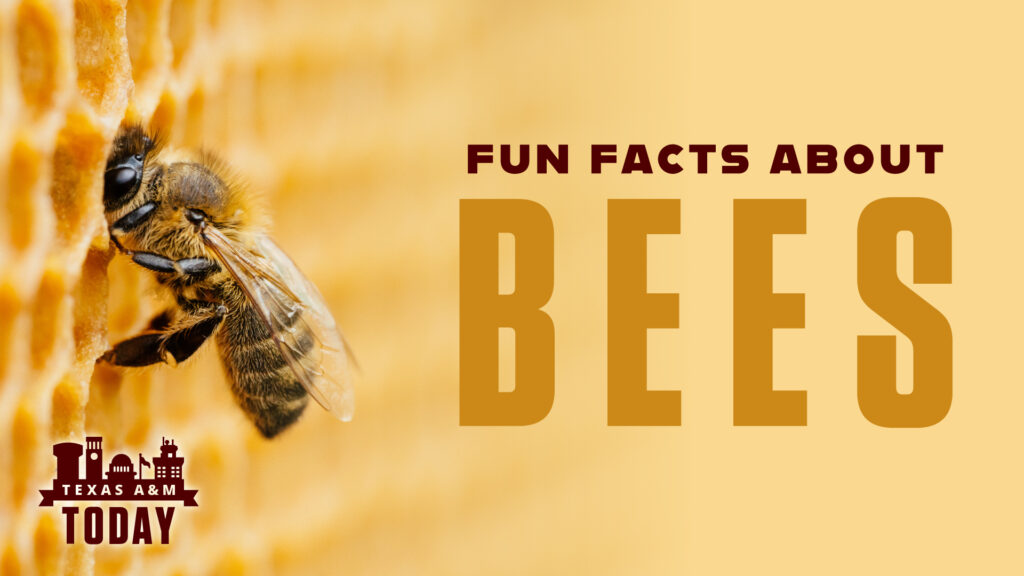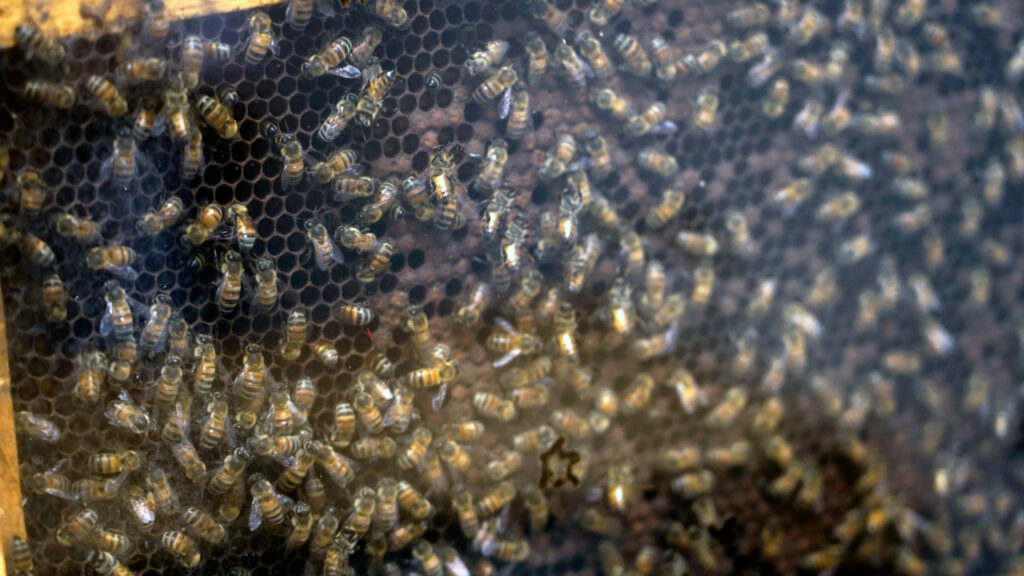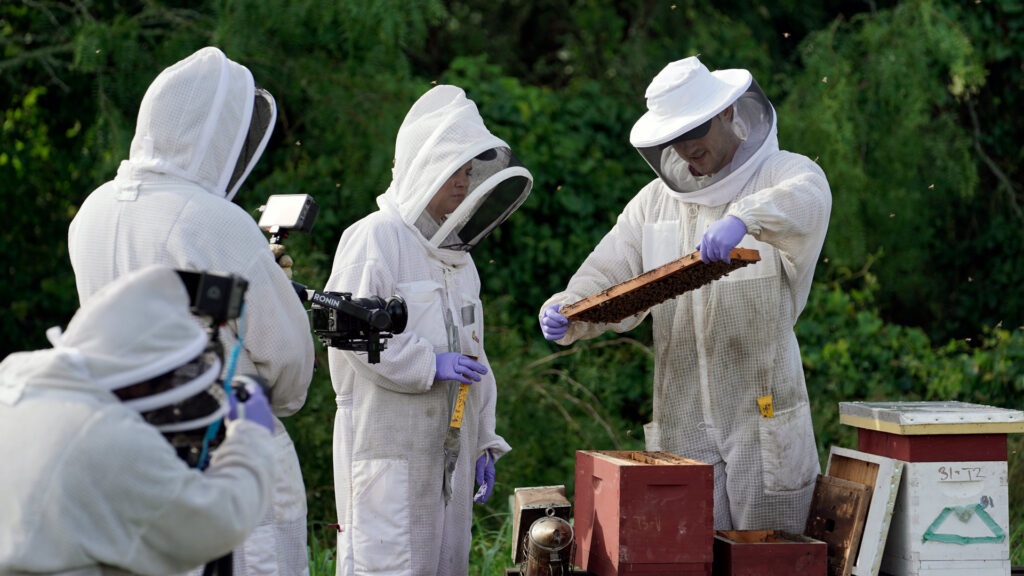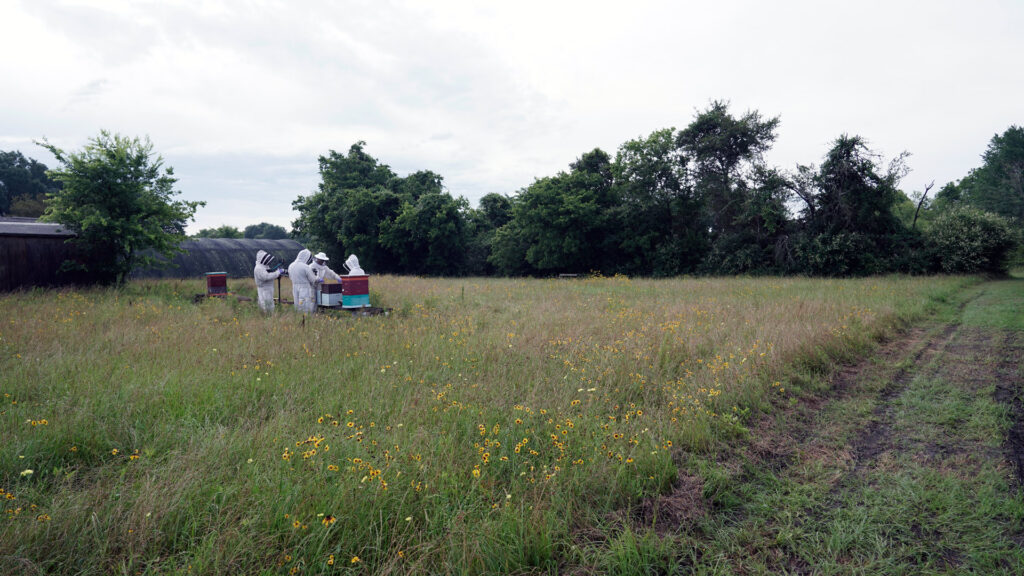Thanks for watching “Texas A&M Today” and learning about the honey bee research program. We learned several fun facts about bees from the research team and we want to share them with you in this bonus article.
Thank Those Bees
Do you enjoy almonds? Whether you eat them plain, in granola, or in milk form, you need to thank bees. “100% of almond production relies on honey bee pollination,” said researcher Dr. Juliana Rangel. It’s one of many food sources and plants that rely on bees, which provide about $16 billion annually to the U.S. economy.
Not All Bees Have Stingers
Drone honeybees — which are the males — cannot sting. Rangel told our crew, “you can actually grab a drone with your fingers and he will never sting you, because he does not have a stinger.”
Ball of Heat
Stinging isn’t the only defensive behavior bees use. If another insect like a wasp or hornet threatens a hive, honey bees can surround them in a ball of swarming bees that will generate heat warm enough to fry the enemy. “The temperature they generate is just low enough that it will not kill the honey bees,” Rangel said.
Bees Are Girl Bosses
All workers in the honey bee colony are females. That means 99.99% of bees that you see on flowers are female because males can’t forage or gather pollen. “They are only out of the colony during the spring or fall during reproductive season,” Rangel said.
The Mating Process
Honey bee queens only make one mating flight during their lives — although they’ll mate with an average of 15 drone bees during the flight. “Then she’ll never mate again,” Rangel said.
Go for White
Bees are less attracted to light colors than dark colors. Why? According to Rangel, “it’s because bees are used to being attacked by small mammals with dark fur.” So if you’re wearing dark colors or have dark hair, bees are more likely to fly near you. That’s why beekeepers wear white gear.
Bees Are Hungry
Ever wondered why there are so many bees near gas station trash cans or flying around open soda cans? It’s because of a lack of natural resources. During seasons when it’s hard for bees to forage from flowering plants, they search out any resource that seems to have sugar in it.
“Honey bees recruit other nestmates to food sources,” Rangel said. “One forager finds it and communicates to the other bees and then you have dozens of bees from that colony foraging all of those resources.”
Bees Need Water
Honey bees consume water. “They need to consume water for their physiological processes,” Rangel said, “but also to dilute food that they feed to the developing babies.” However, bees prefer to drink water that contains salt and minerals rather than clean water.
Support the Texas A&M Honey Bee Research Program
Rangel invites viewers to support the mission of their program. “You can either follow or like us on our social media platforms to learn about what we’re doing in terms of research and outreach,” she said.
The program also has an endowed fund, called the Nevin Weaver Endowed Fund, which you can donate to directly via the Texas A&M Foundation.
Season 2 of “Texas A&M Today” is airing now. Watch on Mondays at 9 p.m. and Saturdays at 6 p.m. on KAMU-TV or stream online at any time. Episode 1 is already available to stream with more episodes coming soon. Visit our show webpage for more information.









